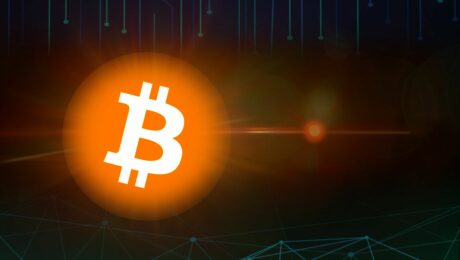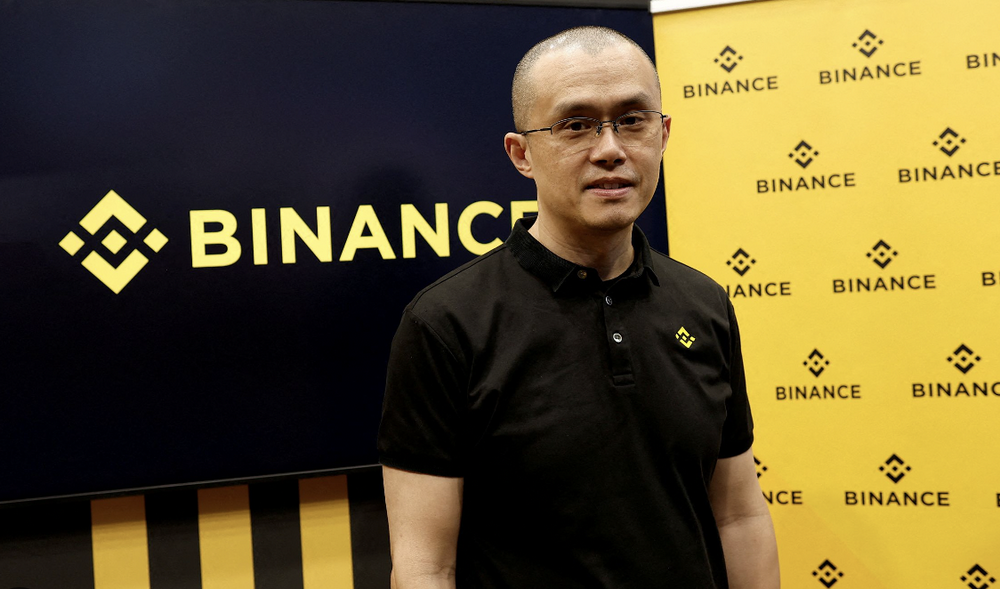Talk about Hayek, Satoshi Nakamoto and Bitcoin
At 18:15:05 on January 3, 2009, Bitcoin's genesis block was born. Satoshi Nakamoto engraved a sentence on Bitcoin's genesis block: "The Times 03 / Jan / 2009 Chancellor on brink of second bailout for banks", this is the title of the Times article on the day: "2009 On January 3, the Chancellor of the Exchequer was on the verge of implementing a second round of emergency bank assistance. "
Seemingly an understatement of citing the title of the article, it actually points to Bitcoin's mission, which is to build a new currency system in a completely different way and provide an alternative path to solve the economic crisis. It is often said that Bitcoin was originally designed to be a peer-to-peer cash system. In Blue Fox's notes, this is just its path, not its goal. Its ultimate goal is to build a new currency system that can resolve the financial crisis.
Now that 11 years have passed, people are gradually discovering the commonalities between Austrian economics and Bitcoin monetary policy. It is a completely different way of thinking from modern economics. It opens up possible directions for human economic development.
Hayek sharp insights into knowledge being fragmented in nature
Hayek once said: "In determining prices and wages, specific information held by each participant in the market process affects it, and neither a scientific observer nor any single brain can know all the facts about these people's behavior Sum. "No one in this world, whether it was Einstein or Newton, could have all the knowledge. Knowledge is scattered in the brains of different people in every corner of the world.
- 2019 Global Blockchain Policy Annual Report: China focuses on support, and the US mostly regulates
- 2020 Central Bank Working Conference: Continue to steadily advance the development of fiat digital currencies
- SAFE lays out work in 2020: supports new business formats, and promotes the construction of cross-border financial blockchain service platforms
If knowledge is decentralized from the perspective of the sum of facts, what effect does this have? Hayek's perception is profound: "The centrally planned economy can never be comparable to the efficiency of open markets, because a single subject knows only a small part of the total amount of knowledge owned by all members of society." The fact that knowledge is dispersed As a result, there is never an omnipotent decision-making body. This leads to the natural absence and unpredictable consequences of purely single-institutional planning economic decisions.
Hayek once published an important economics document, "The Use of Knowledge in Society." Knowledge here refers to the sum of various facts, such as the price, demand, and alternatives of different commodities in the market. Knowledge, marginal cost, technology upgrade, etc. This knowledge is enormous. But there is an important signal here, and that is price. Price is the ultimate presentation of this highly concentrated knowledge. By price, Hayek found the key to understanding human behavior. Although people can't master all the knowledge, price is a good pointing tool.
According to Hayek: "Basically, knowledge of relevant facts is scattered in the hands of many people, and prices can coordinate the individual behavior of different people … suppose there is a certain place in the world that uses a certain raw material (such as tin) New way, or the supply of tin somewhere has dried up, the relationship is not very important about what caused the shortage (this is very important). The only thing that tin users need to know is that tin has been used before, but now it is elsewhere It is more profitable to use, and now it must be used sparingly … It is not only the use of tin that is affected, but also the alternatives to tin and the use of alternatives. And most of those who provide alternatives, a little Children do not know the original cause of these changes.
All this constitutes a market, not because a certain market member must have a complete understanding of the market as a whole, but because each of them's limited horizons are sufficiently overlapping to cover the entire market. Hayek said that this kind of decentralized knowledge, everyone pays attention to the most important part of themselves, which will eventually effectively connect the entire market through price.
Speaking of price, for example, the crypto market is very small, currently less than 200 billion US dollars, is recognized as a highly speculative market, but there is a price in any market, and a lot of inexhaustible knowledge is hidden behind the price formation. It passes many Information is the final result of the game of many factors. The crypto market is a world market, and its price depends on people's understanding of the crypto world's landing and speculative demand, but in essence, whether it is the fundamentals of the crypto world project or speculative demand is a kind of knowledge, this knowledge is based on various Information.
However, all this information is not available to anyone in the world. For example, some people are good at fundamental analysis. For the technical development of Bitcoin, the transaction volume on the chain, the number of active addresses, and hash rate, etc. Very familiar, but he may not understand the psychological needs of buying Bitcoin in each region. Why do people in Nigeria and South Africa like Bitcoin? Why are people in Venezuela and Argentina interested in Bitcoin? How will the Iran issue affect the price of Bitcoin? Does the Fed's quantitative easing affect the price of Bitcoin? What exactly happens to Bitcoin halving? What is the impact of Bakkt's Bitcoin futures? What does the USDT high premium indicate? …….
This knowledge is just the tip of the iceberg. There is a lot of potential for these knowledge to interact with each other. Not only that, but it is also a 24-hour uninterrupted market worldwide. Its prices are passed around the world and people's awareness is constantly increasing. The individual decisions of each crypto investor refer to changes in its price. Whether it is obtained through social media or self-media (WeChat, Weibo, twitter, Google, etc.), or through market software, data analysis websites, exchanges, etc., in the end, it is highly concentrated and presented as prices.
Here, no one person or even an organization can master all the knowledge and cannot form a complete decision. Price is not only the result of knowledge, it is also counterproductive. Everyone has different judgments on the investment or speculation of the value of the project, and there are transactions when there are differences. The price of the transaction in turn acts on the market and forms new knowledge. This knowledge is constantly evolving and changing. But people do not need to have all the knowledge to make decisions, they only care about the information that is most important to TA, and when everyone does this, an effective equilibrium market is formed.
So, is there anyone or organization in the world who thinks they are competent for perfect economic decisions? The Fed tries to do this. It is made up of experts trying to fight incomplete knowledge with the smartest brain in the world.
Fed's Knowledge Dilemma
Under the modern monetary economics system, the US dollar operates based on the credit system. It stimulates economic development through irregular quantitative easing policies, but the problem here returns to Hayek's insight. The Federal Reserve is the decision-making body for monetary policy. Does it have all the knowledge? Can it understand all people's actions? Can it make perfect decisions? Will its decisions have unpredictable consequences?
From the current point of view, although this monetary policy has promoted economic development, it will bring economic crises every so often. When people's income growth cannot support their debts, the economic crisis will erupt.
Why can't the central agency achieve the optimal allocation of resources? The important reason is that it cannot master all the social knowledge. There is a knowledge bottleneck in any central institution and it is impossible to make all the best decisions at a single point in time. This is a limitation of any individual or individual institution.
In this complex system, because all knowledge is not available, it is impossible to calculate an absolutely positive cause-effect relationship. Hayek once said: "If we have all the relevant information, if we can start with a known preference system, if we have a complete knowledge, the rest is just a matter of logic. That is … .. The conditions that must be met to solve this optimization problem have been calculated and can be best expressed in mathematical form. "
Hayek made it clear that as long as people have complete knowledge, the answer comes naturally. Satoshi Nakamoto has also said that it is virtually impossible to determine the appropriate inflation rate. If it cannot be measured, it cannot be managed. Without adequate knowledge, it is not possible to provide adequate and appropriate policies for the economy. Satoshi Nakamoto's idea is similar to Hayek's. Since it is impossible, why not remove the human intervention of a single institution?
The current US dollar is driven by the credit system and continues to stimulate economic growth through quantitative easing. However, this continuous inflation model may not only produce economic crises, but also cause changes in wealth distribution. And this change is at a disadvantage for ordinary people. From the chart below, compared with the wealth of 0.1% of the richest people in the United States and the bottom 90%, the bottom 90% had a clear advantage between 1985 and 1989, but after that, the 0.1% of the richest The total amount of wealth occupied by people continued to rise rapidly, while the bottom 90% of the total amount of wealth continued to decline. In 2013, the total wealth of the two was flat.

(U.S. Wealth Distribution Trends Since 1985)
One of the important reasons leading to the differentiation of the rich and the poor in the United States is its monetary policy based on the credit system. The rich have the opportunity to purchase assets through borrowing and add value to their assets. However, the poor are in a disadvantaged position in the inflation credit system and can only bear the dollar inflation Consequences of a decline in purchasing power. It is equivalent to issuing new money. If everyone is divided equally, then the relative purchasing power of everyone will not change much.
The subtle change is that most of the newly added money flows into a small number of companies and wealthy people. After a period of time, it will be found that the proportion of chips in each person's hands has changed significantly. Some people have increased their chips and some have reduced their chips. Even if everyone has an increase (almost impossible), the percentage of increase in chips is different. From the perspective of purchasing power, some people have enjoyed the results, while others have suffered losses. The economic crisis and the misallocation of wealth were not the original intentions of the Fed, but because of its natural knowledge limitations, it was unable to resolve this disease.
Satoshi Nakamoto and Bitcoin's Robust Currency Experiment
As stated in the preface of the Blue Fox note, Satoshi Nakamoto constructed Bitcoin to a large extent because of the need to solve the aforementioned economic problems.
Bitcoin has obvious advantages in currency attributes. It has advantages over gold in terms of portability, divisibility, transferability, etc., and it guarantees its security through distributed node mining.
In addition to these underlying properties, one of the most critical aspects of Bitcoin's robust currency experiment is its "hardness." Its hardness comes from the fact that there is an upper limit to the total amount of money it can issue, and the plan to issue it is transparent. It has a total of 21 million pieces, and its circulation is halved approximately every four years, until the mining issuance is completed in 2140.
If Bitcoin is used as a tool to measure people's wealth, it will always be clear and transparent. No matter how many years have passed, 1btc is still equal to 1btc and it will not depreciate. And over time, a dollar is never a dollar. As can be seen from the figure below, under the current credit system model, the depreciation trend of the US dollar is continuing.

(From 1980 to 2019, the purchasing power of the US dollar continued to decline, and the purchasing power of $ 100 in 1980 was less than $ 30 in 2019. Source: Sylvain Saurel)
If social wealth anchors Bitcoin, even if it cannot become an account unit, even if it becomes the anchor asset of the fiat currency system, it can make it an important tool for measuring wealth. If Bitcoin's currency experiment evolves well, if the number of Bitcoin users continues to increase, once it has value storage and exchange media functions, because its total amount is capped, and transaction records are immutable and transparent, this This means that people can more clearly calculate risks and rewards when making decisions, such as based on knowledge such as price.
In the ultimate ideal case, if Bitcoin becomes the unit of account, then all economic activities, especially the flow of funds, will become clear, what consumers want, how many goods the producer provides, and the scale of demand for different goods And so on can be reflected in real time. This extremely transparent system greatly reduces the cost of acquiring more knowledge. Through the analysis system, this knowledge can be sorted out in real time faster.
In this case, Bitcoin is not only a currency system, but also a system for recording economic activity and a system for recording price changes. This system has the characteristics of real-time feedback, which can promote the efficiency of resource allocation in the economy. This gradually approached Hayek's claim of complete knowledge.
The situation described above is a description of a robust currency experiment. Adam Taché has described this very well. He said: "Robust currency is equivalent to scientific integrity: after the experiment, the system does not allow data manipulation."
The stable currency itself has a fixed amount, so it cannot be artificially issued or tampered with. Bitcoin is such a monetary policy experiment, which is different from the inflationary credit system. It has a clear scale to measure the total amount of economic activity and the total amount of wealth. With this ruler, the measurement of value and wealth becomes clear.
Why did Satoshi Nakamoto adopt a fixed upper limit rule? Of course, Satoshi Nakamoto also knew that fixed totals would bring speculation and bubbles. Once the user grows, the value of a single token will also increase due to the increase in demand, because the quantity is limited, which will further cause supply shortages, thereby forming a driving force for price increases, and the price increase will attract more users' attention, thereby driving more people participate.
One of the important reasons for Satoshi Nakamoto to adopt a fixed cap is that there is no better way. First of all, in his opinion, no one can act as the Federal Reserve to adjust the money supply as users grow. If there is a better way, Satoshi hopes to programmatically write into the Bitcoin blockchain.
Conclusion
If Bitcoin can evolve into a universal currency for humans, it will lead to an increase in human collaboration efficiency, which can greatly reduce transaction costs.
Of course, from today's perspective, there is too much idealism and incredibleness here. However, if the economic activities of all individuals, businesses and organizations are recorded through the Bitcoin ledger, or at least documented. Then, Bitcoin is the existence of a super body. Through it, you can grasp the real information of prices, you can immediately grasp the flow of social funds, you can better plan, better measure social value and wealth, and find a possible path to solve the economic crisis. .
Risk warning: All articles of Blue Fox Note cannot be used as investment advice or recommendations. Investment is risky. Investment should consider personal risk tolerance. It is recommended to conduct in-depth inspection of the project and make good investment decisions.
We will continue to update Blocking; if you have any questions or suggestions, please contact us!
Was this article helpful?
93 out of 132 found this helpful
Related articles
- Filecoin Ultimate Guide: An Overview of How It Works, Parsing Protocols, and Possible Improvements
- Bitcoin 12th year: building tools for the future in the "chaotic era"
- One week in review | Ethereum implements "Muel Glacier" upgrade; Bitmain launches personnel optimization plan
- Why are these 7 areas of blockchain worthy of attention in 2020? Pantera partner Paul Veradittakit shares his views
- Securities Times: The most significant application of China's securities industry in blockchain technology is the promotion of ABS business
- Blockchain + Urban Governance: Obviously there is a strong demand, why are you worried?
- Iran's domestic bitcoin premium is serious, bitcoin sells for up to 24,000 US dollars






